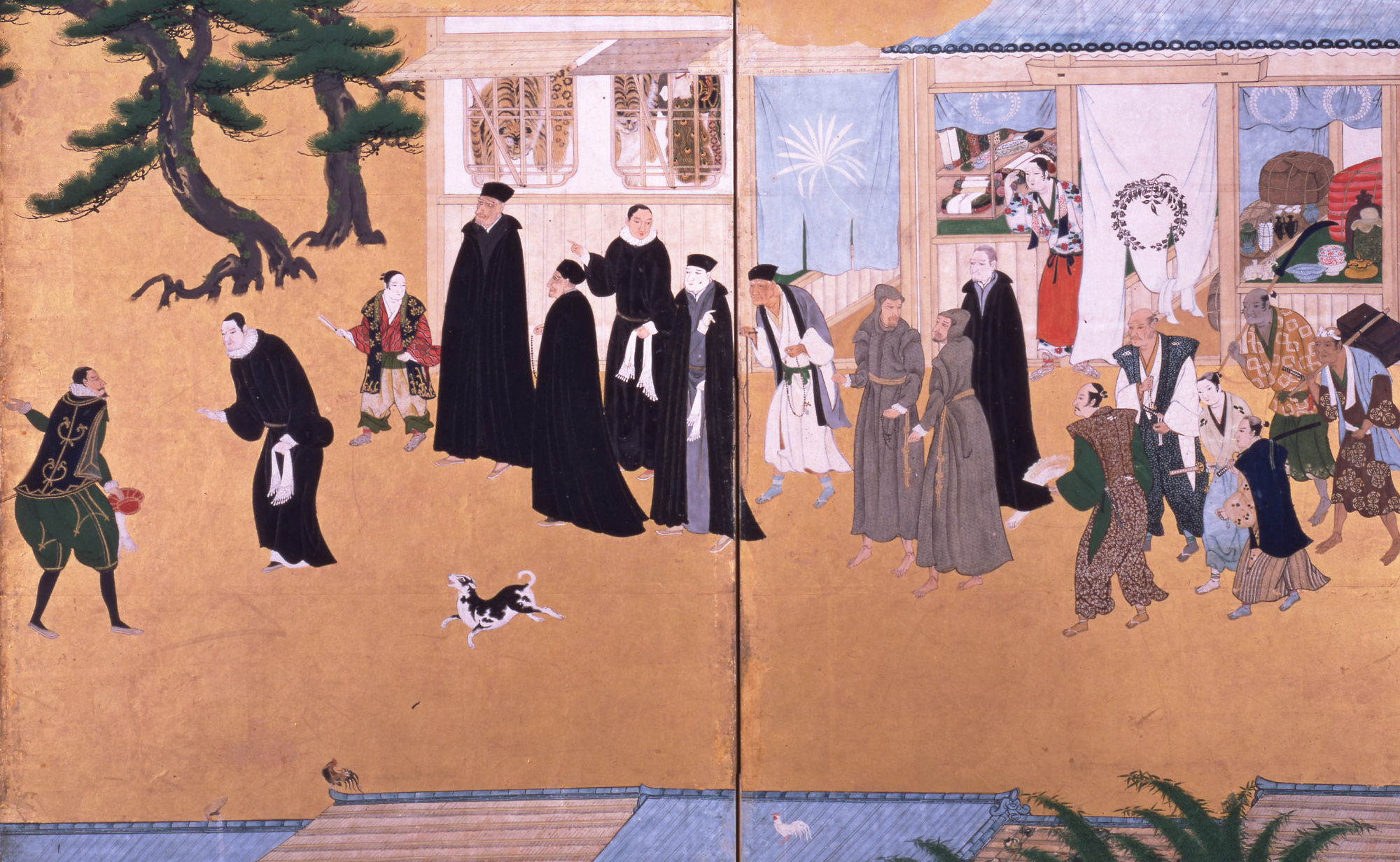
Born in Chieti in the Kingdom of Naples, Valignano went to Padua to study law, then entered in the Society of Jesus in 1566. After studying philosophy and theology at the Collegio Romano, he was ordained in 1570 and taught briefly at the Jesuit Collegio of Macerata in 1571. Among his students was Matteo Ricci (1552–1610), who was to be a prominent figure in the Society’s China mission.
In 1571 Valignano was appointed “Visitor” (Visitador) to supervise the entire Jesuit mission in the whole of Asia. He came to Japan three times in total and stayed there for a long period (1579–1582, 1590–1592 and 1598–1603). During his stay, he determined the basic policies of the local mission related to structure reorganization, fund raising and salary structure. He also executed various tasks, including the organization the Tensho embassy in 1582. In his visit to diverse regions of the country, he met prominent feudal lords such as Sorin Ootomo, Nobunaga Oda and Hideyoshi Toyotomi.
As a basic policy of the mission, Valignano emphasized integration into the local society and culture without being overly attached to Western habits. This is known as the “adaptation” policy. At the same time, he was active in introducing Western philosophy and science into Japan as the basis of Christian belief. Namely, regarding the formation of local priests as a pressing issue, he founded institutions such as the seminario and collegio. This provided the institutional basis for a direct encounter with the Western culture and civilization. Upon the return of the Tensho embassy from Rome, Valignano brought a printing machine and movable type to Japan. This was the beginning of the publishing activity which produced a series of texts for the priests and new believers of the country.
Valignano composed various reports and treatises on a wide range of topics. Among these writings, his Catechism of the Christian Faith (Cathechismus Christianae fidei) (Lisbon, 1586) is probably most prominent. It contributed a lot to the introduction of Western scientific knowledge into Asia and Japan.
Select Bibliography
Franz Josef Schütte, Valigano’s Mission Principles for Japan, 2 vols. (St. Louis: Institute of Jesuit Sources, 1980–1985) [German orig. Valignanos Missionsgrundsätze für Japan (Rome: Storia e Letteratura, 1951–1958)].
J. E. Moran, The Japanese and the Jesuits: Alessandro Valignano in Sixteenth-Century Japan (London: Routledge, 1993).
Andrew C. Ross, “Alessandro Valignano: The Jesuits and Culture in the Far East,” in The Jesuits: Cultures, Sciences and Arts, 1540–1773, ed. John O’Malley (Toronto: University of Toronto Press, 1999), 336–351.
M. Antoni Üçerler, “Alessandro Valignano: Man, Missionary and Writer,” in Asian Travel in the Renaissance, ed. Daniel Carey (London: Wily, 2004), 12–41.
M. Antoni Üçerler, “The Jesuit Enterprise in Japan (1573-1580),” in The Mercurian Project: Forming Jesuit Culture, 1573–1580, ed. Thomas McCoog (Rome: Institutum historicum Societatis Iesu, 2004), 831–876.
M. Antoni Üçerler, “The Jesuit Enterprise in Sixteenth- and Seventeenth-Century Japan,” in The Cambridge Companion to the Jesuits, ed. Thomas Worcester (Cambridge: Cambridge University Press, 2004), 153–168.
Adolfo Tamburello et al. (ed.), Alessandro Valignano S.I., uomo del Rinascimento: ponte tra oriente e occidente (Rome: Institutum historicum Societatis Iesu, 2008).
Ken Nejime, “Alessandro Valignano (1539–1606) between Padua and Japan,” Bulletin of Gakushuin Women’s College 16 (2014), 43–52.


5 Replies to “Alessandro Valignano (1539–1606)”
Comments are closed.